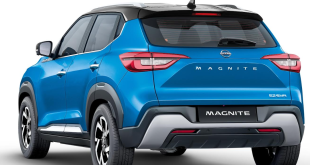- Auto retail sales in May demonstrated a 10% YoY growth, encompassing positive performances across all vehicle categories including 2W, 3W, PV, Tractor and CV with respective growth rates of 9%, 79%, 4%, 10%, and 7%.
- Despite a slight decline of -2% compared to pre-COVID levels, the overall retail figures relatively improved, except 2W sales (-8%) and CV sales (-7%) being the primary segments which experienced slight setback.
- May showcased an increased penetration of EVs, accounting for 8% of total sales, with 2W contributing 7%, 3W contributing 56%, CV contributing 0.5% and PV contributing 2.5% respectively.
- 2W sales were positively influenced by the marriage season and the anticipated changes in FAME subsidies, set to be effective from June, which drove higher sales of 2W EVs. The recovery of rural demand also indicated a promising outlook, suggesting the potential decline of COVID-19’s impact.
- The PV segment rebounded after a decline in the previous month, driven by improved availability, strong pending orders and robust demand for new launches, contributing to the segment’s positive momentum.
- CV sales experienced sustained growth, attributed to the government’s focus on infrastructure development, with the bus segment also displaying a notable increase due to improved financing options and higher sales in academic institutions.
5th June’23, Mumbai: The Federation of Automobile Dealers Associations (FADA) today released Vehicle Retail Data for May’23.
May’23 Retails
Commenting on May 2023 performance, FADA President Mr. Manish Raj Singhania stated, “May has been an encouraging month for the auto retail industry, demonstrating a robust 10% YoY growth across all vehicle categories. We have witnessed a resurgence in the 2W, 3W, PV, Tractor, and CV segments with growth rates of 9%, 79%, 4%, 10%, and 7% respectively. While there has been a slight -2% decline compared to pre-COVID levels, the overall retail figures have shown improvement. The 2W and CV sales did continue to face some challenges, recording high single digit setback of -8% and -7% respectively.
Electric Vehicles (EVs) made impressive strides this month, contributing to 8% of the total vehicle retail. This was buoyed by a surge in 2W EV sales that contributed 7% and 3W EV sales contributing a substantial 56% of their respective total sales. The CV and PV categories also marked their presence in the EV landscape, with respective contributions of 0.5% and 2.5%.
The 2W sales were positively influenced by seasonal factors like the marriage season, changes in the FAME subsidies effective from June, and the recovery of rural demand, which hint towards a promising future in the aftermath of the COVID-19 pandemic.
In the Passenger Vehicle segment, the improved availability of vehicles, the strength of pending orders, and the robust demand for new launches drove a positive momentum, helping the segment rebound after a slump in the previous month.
The Commercial Vehicle segment experienced sustained growth, underpinned by the government’s focus on infrastructure development. The bus segment displayed a notable increase, driven by improved financing options and higher sales in academic institutions.
As we move forward, we remain committed to our customers and will continue to navigate these dynamic times, providing them with the best products and services that cater to their ever evolving needs and preferences.“
Near Term Outlook
The auto retail sector faces diverse challenges across the 2W, CV and PV segments. For 2W, seasonal factors could boost demand, but concerns like weather-induced walk-in reductions, inventory, and regulatory norms persist. The CV sector anticipates improved vehicle availability but concerns about RDE norms and seasonal effects may impact sales. The PV sector expects increased demand, particularly for new models, Compact & full-sized SUVs and EVs, but inventory pressure and right model availability could pose challenges.
FADA advocates for a balanced auto retail ecosystem, urging collective action to regulate inventory levels, negotiate lower interest rates and support 2W Dealers by eliminating illegal MBO sales. While acknowledging near-term challenges, FADA maintains a stance of cautious optimism, highlighting the potential for growth through collaborative efforts and alignment with market trends.
The anticipated stable interest rates by RBI’s Monetary Policy Committee could maintain vehicle demand and positively impact auto sales. However, supply chain issues, demand-supply dynamics, and regulatory changes also play a role in shaping the auto retail outlook.
Key Findings from our Online Members Survey
- Inventory at the end of May’23
- Average inventory for Passenger Vehicles ranges from 40-45 days
- Average inventory for Two – Wheelers ranges from 15-20 days
- Liquidity
- Neutral 42.65%
- Good 37.75%
- Bad 19.61%
- Sentiment
- Neutral 43.63%
- Good 32.84%
- Bad 23.53%
Chart showing Vehicle Retail Data for May’23
All India Vehicle Retail Data for May’23
| CATEGORY | MAY’23 | MAY’22 | YoY % (2022) |
| 2W | 14,93,234 | 13,65,924 | 9.32% |
| 3W | 79,433 | 44,482 | 78.57% |
| E-RICKSHAW(P) | 36,755 | 21,045 | 74.65% |
| E-RICKSHAW WITH CART (G) | 3,210 | 1,826 | 75.79% |
| THREE WHEELER (GOODS) | 8,104 | 6,390 | 26.82% |
| THREE WHEELER (PASSENGER) | 31,297 | 15,179 | 106.19% |
| THREE WHEELER (PERSONAL) | 67 | 42 | 59.52% |
| PV | 2,98,873 | 2,86,523 | 4.31% |
| TRAC | 70,739 | 64,528 | 9.63% |
| CV | 77,135 | 71,964 | 7.19% |
| LCV | 41,149 | 42,176 | -2.44% |
| MCV | 6,047 | 4,768 | 26.82% |
| HCV | 26,399 | 22,927 | 15.14% |
| Others | 3,540 | 2,093 | 69.14% |
| Total | 20,19,414 | 18,33,421 | 10.14% |
Source: FADA Research
Disclaimer:
- The above numbers do not have figures from TS & LD.
- Vehicle Retail Data has been collated as on 03.06.23 in collaboration with Ministry of Road Transport & Highways, Government of India and has been gathered from 1,350 out of 1,436 RTOs.
- Commercia Vehicle is subdivided in the following manner
- LCV – Light Commercial Vehicle (incl. Passenger & Goods Vehicle)
- MCV – Medium Commercial Vehicle (incl. Passenger & Goods Vehicle)
- HCV – Heavy Commercial Vehicle (incl. Passenger & Goods Vehicle)
- Others – Construction Equipment Vehicles and others
- 3-Wheeler is sub-divided in the following manner
- E-Rickshaw – Passenger
- E-Rickshaw – Goods
- 3-Wheeler – Goods
- 3-Wheeler – Passenger
- 3-Wheeler – Personal
May’23 category-wise market share can be found in Annexure 1, Page No. 05
 Newspatrolling.com News cum Content Syndication Portal Online
Newspatrolling.com News cum Content Syndication Portal Online






